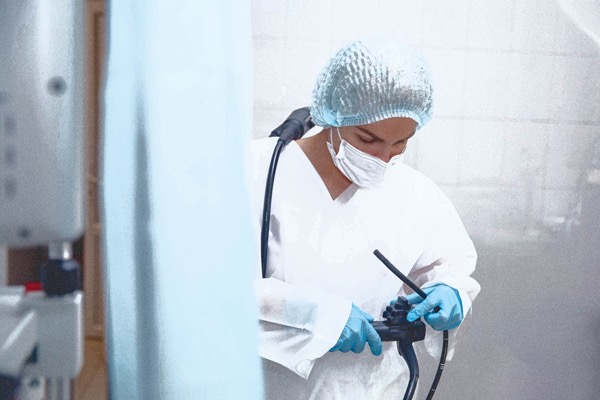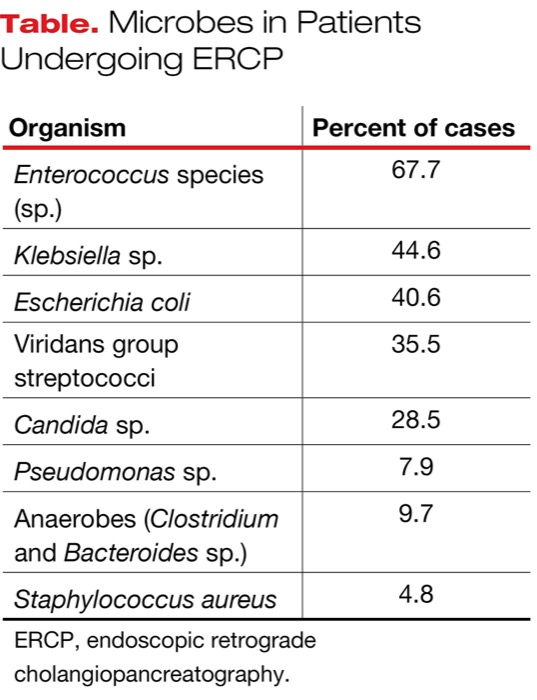The entire endoscopy team should recognize the importance of the procedures and protocols involved in reprocessing endoscopes and related infection prevention strategies, experts underscored during the 2024 annual meeting of the Society of Gastroenterology Nurses and Associates.
“We must respect reprocessing [of] reusable scopes,” said Mark Gromski, MD, the director of advanced endoscopy at Indiana University School of Medicine, in Indianapolis. “Reprocessing is a complex set of steps that all need to be followed closely to adequately decontaminate a scope,” he said. “The team you have in place can’t do it poorly, as the patient’s life can very much be affected.”
Jim Collins, BS, RN, CNOR, a practice manager at Cleveland Clinic’s Digestive Disease & Surgery Institute, in Cleveland, also underscored the importance of the entire endoscopy team in promoting safety in the endoscopy suite. “Caregivers play a crucial role in the infection control and prevention activities in their endoscopy unit,” he told GEN Priority Report. “Educating caregivers on trending, current and evolving IP [infection prevention] practices, analyzing the unit’s current IP practices, and prompting the adaptation of best IP practices promote and improve patient and caregiver safety.”
Multidrug Resistance And Systemic Infections
Dr. Gromski emphasized the potential for patient-to-patient contamination with improperly sanitized scopes and described research-backed infection prevention methods endoscopy staff can employ.
He presented data from a study he and co-investigators conducted analyzing the types of pathogens found in 615 patients suspected of having biliary infections who had undergone endoscopic retrograde cholangiopancreatography procedures (Endoscopy 2022;54[11]:1045-1052). Multiple species were found, with Enterococcus species being the most common (Table).
| Table. Microbes in Patients Undergoing ERCP | |
| Organism | Percent of cases |
|---|---|
| Enterococcus species (sp.) | 67.7 |
| Klebsiella sp. | 44.6 |
| Escherichia coli | 40.6 |
| Viridans group streptococci | 35.5 |
| Candida sp. | 28.5 |
| Pseudomonas sp. | 7.9 |
| Anaerobes (Clostridium and Bacteroides sp.) | 9.7 |
| Staphylococcus aureus | 4.8 |
| ERCP, endoscopic retrograde cholangiopancreatography. | |
“We also found a substantial percentage of those cases had drug resistance, and those percentages of multidrug resistance were higher than what we had previously seen,” Dr. Gromski said.
These bacteria and fungi can result in dangerous and potentially fatal outcomes for patients, he added.
Jim Collins, BS, RN, CNOR, a practice manager at Cleveland Clinic’s Digestive Disease & Surgery Institute, in Cleveland, agreed that care providers need to be aware of the potential dangers of these organisms. “While rare, it’s possible for these bacteria to travel through the bile ducts to the liver where the bacteria may enter the bloodstream and be spread throughout the body, resulting in a life-threatening systemic infection or septicemia,” he noted. “Caregivers must be cognizant of these events to be able to promote a safer environment and assist in the reduction of the threat of an infection.”
Preventive Strategies
Such infections can be prevented by effective reprocessing strategies, Dr. Gromski said. He and his co-investigators found that both double high-level disinfection and liquid chemical sterilization resulted in a low rate of positive surveillance duodenoscope cultures and a very low rate of high-concern/pathogenic organism growth (Gastrointest Endosc 2021;93[4]:927-931).
Education and training are additional crucial components of infection prevention programs. Linda Curtin, MSN, RN, CGRN, CER, the clinical nurse manager of endoscopy at Brown Medicine, in Providence, R.I., called her center’s highly trained reprocessing staff “the heart and soul of our infection prevention program.”
Ms. Curtin stressed the importance of recognizing the endoscopy staff as valuable team members and providing them “with the time, the education and the support they need to perform their job expertly 100% of the time.” She told GEN Priority Report that the basics of prevention of transmittable diseases, such as hand hygiene, personal protective equipment and sharp safety, are a big part of education of reprocessing staff, and play a big role in keeping patients safe.
Another way to prevent these infections is using a disposable or partially disposable scope. “The benefits of the reusable scope with the disposable cap is that it’s similar to prior generations of scopes that we’ve been using for many, many years,” Dr. Gromski said. “The potential downside is that data today tells us that it probably will not completely eliminate the contamination rate, but it will hopefully improve it. There’s also the risk of the cap dislodging within the GI tract.” (See related story, GEN Priority Report, July 2024.) Fully disposable scopes eliminate the risk for contamination from patient to patient, but researchers have observed a learning curve with these tools, and Dr. Gromski noted that it takes about 10 cases to obtain the performance characteristic of a reusable scope. He also pointed to the environmental impact that needs to be considered with single-use scopes.
—Ashley Welch


